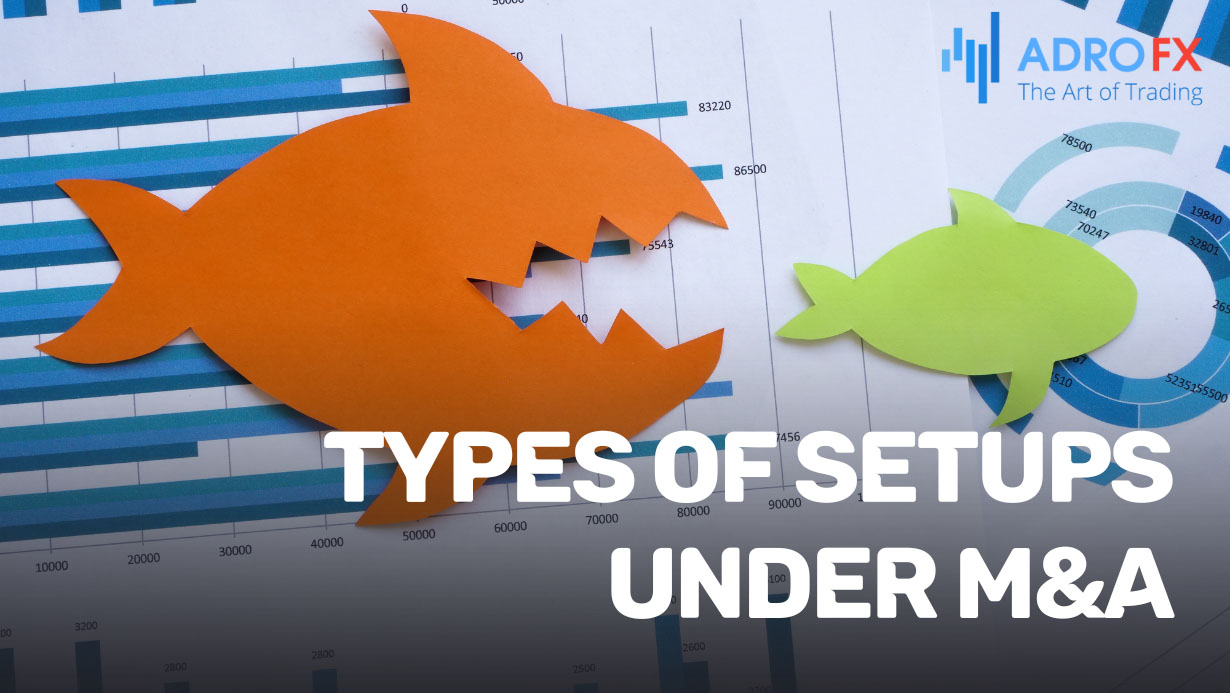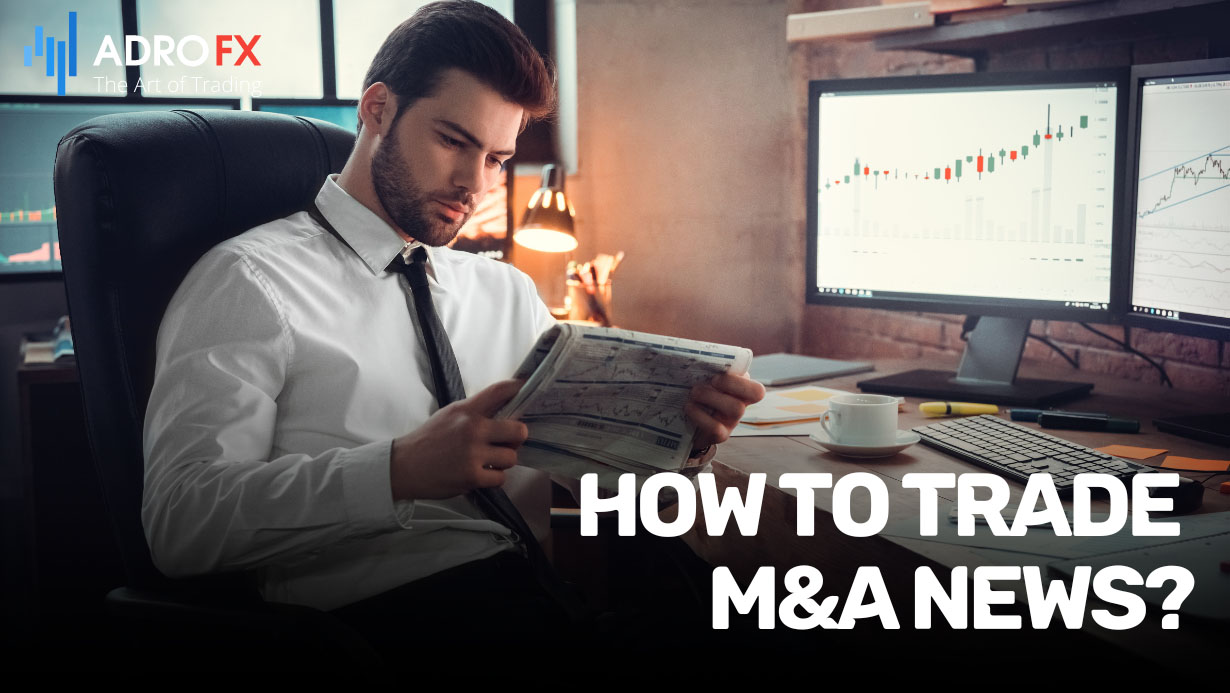Mergers and Acquisitions Explained: Navigating Strategies, Setups, and Market Dynamics

The realm of mergers and acquisitions (M&A) constitutes a dynamic landscape where businesses strategically align and transform through financial transactions. This article delves into the intricacies of M&A, shedding light on the key terms, diverse setups, pricing mechanisms, and the art of trading amid rumors and news. Mergers and acquisitions serve as pivotal strategies for organizations aiming to attain growth, fortify market presence, gain competitive edges, or explore new horizons. As we navigate through the depths of M&A, we unravel the multifaceted facets that define this intricate financial terrain.
Understanding Merger and Acquisition
Merger and acquisition refer to the consolidation of companies through various financial transactions. These transactions involve the combination of two or more companies to form a new entity or the acquisition of one company by another. Mergers and acquisitions are common strategies used by businesses to achieve growth, increase market share, gain competitive advantages, or enter new markets.
Here are the key terms associated with M&A:
Merger:
- Horizontal Merger: Involves the combination of companies operating in the same industry and at the same stage of the production process. For example, two pharmaceutical companies merging.
- Vertical Merger: Involves the combination of companies operating at different stages of the production process or supply chain. For instance, a manufacturing company merging with a distribution company.
Acquisition:
- Friendly Acquisition: Occurs when the target company agrees to be acquired willingly.
- Hostile Takeover: Occurs when the acquiring company pursues the target company against its will, often by purchasing a significant portion of its shares in the open market.

Types of Setups Under M&A
In the context of mergers and acquisitions, various types of setups and structures can be employed based on the specific goals, legal considerations, and financial strategies of the companies involved. Here are some common types of M&A setups:
Merger of Equals
In this setup, two companies of relatively equal size and strength come together to form a new, combined entity. The aim is to create a synergistic relationship where the strengths of each company complement the other.
Acquisition
Acquisition involves one company (the acquirer) purchasing another company (the target). The acquirer gains control over the target, and the target may continue to exist as a separate legal entity or be integrated into the acquirer's operations.
Asset Purchase
In an asset purchase, the acquiring company purchases specific assets of the target company. This can include tangible assets like equipment and inventory, as well as intangible assets like intellectual property. The acquiring company may not necessarily assume the liabilities of the target.
Stock Purchase
In a stock purchase, the acquiring company buys a significant portion or all of the target company's shares. This gives the acquirer ownership and control over the target. The target company continues to exist, but ownership has changed.
Spin-Off
A spin-off involves a company divesting or spinning off a portion of its business into a separate, independent entity. The new entity may be sold, merged with another company, or operate independently.
Carve-Out
Similar to a spin-off, a carve-out involves a company selling or divesting a specific business unit or division, creating a new entity. The difference is that the new entity might still be partially owned by the parent company.
Joint Venture
In a joint venture, two or more companies form a new entity to collaborate on a specific project or business activity. The joint venture is a separate legal entity, and each participating company typically retains ownership of its assets outside the venture.
Reverse Merger
In a reverse merger, a private company acquires a publicly traded company. This allows the private company to go public without undergoing the traditional initial public offering (IPO) process.
Management Buyout (MBO)
In an MBO, the existing management team of a company acquires a significant stake or the entire company from its current owners. This can be a way for management to take control and potentially implement changes.
Tender Offer
A tender offer involves a company making a public offer to purchase the shares of another company directly from its shareholders. This can be a friendly or hostile transaction.
The choice of the M&A setup depends on the strategic objectives of the companies involved, regulatory considerations, tax implications, and the desired level of integration between the entities. Each type of setup has its advantages and challenges, and the success of an M&A transaction often hinges on careful planning and execution.

Reasons for Corporate Acquisition Strategies
- Pioneering Technology/Expertise Integration
In an ever-evolving business landscape, survival hinges on adaptability. Companies actively seek acquisitions to assimilate novel technologies and expertise, exemplified by Google's decade-long spree acquiring over 30 AI startups, positioning itself for the influential era ahead.
- Embracing Economies of Scale
The ethos of "bigger is better" propels companies toward acquisitions for economies of scale. British Airways, through mergers, birthed the International Airlines Group (IAG), exemplifying how size leads to cost savings and competitive dominance, especially in the aviation industry.
- Pursuit of Market Share
The constant evaluation of market standing drives companies to engage in mergers and acquisitions. Notably, the quest for market share must tread carefully to avoid antitrust scrutiny, as observed in the banking sector's consolidation, creating entities deemed 'too big to fail.'
- Synergistic Value Creation
While synergy claims sometimes exaggerate, instances like Amazon's acquisition of Whole Foods in 2017 exemplify logical endeavors. Amazon aimed to merge its eCommerce prowess with traditional food retail, triggering a positive market response within hours of the deal.
- Geographical Expansion
Acquiring existing entities in foreign territories facilitates rapid company growth. The merger of Habyt and Hmlet, turning Habyt into the global co-living leader, mirrors Santander's success in becoming a major retail banking force through acquisitions in nine countries outside Spain.
- Vertical Integration Strategies
Companies pursue vertical integration by acquiring segments of the value chain. LiveNation's acquisition of Ticketmaster in 2010, securing control over ticket distribution, serves as a notable instance of this strategic approach.
- Revenue Synergies Through Cross-selling
Cross-selling emerges as a potent strategy for revenue synergies, exemplified by Starbucks' acquisition of Teavana. This union allows customers to enjoy tea at Starbucks and coffee at Teavana, showcasing the complementary nature of the products.
- Tactical Use of Taxation Strategies
Though seldom openly acknowledged, tax considerations often drive M&A decisions. Companies discreetly utilize acquisitions to leverage carry forward tax losses, effectively reducing their overall tax burden.
- Financial Stream Acquisition
In cases where a steady cash flow becomes the focal point, private equity firms engage in acquisitions. TaskUs Inc.'s acquisition by Blackstone for over $500 million, facilitated by US investment bank William Blair, exemplifies this financially driven motive.
- Opportunistic Deal Pursuits
Not every acquisition is premeditated; some are born out of opportunity. CEOs emphasize the "once-in-a-lifetime deal" notion, exemplified by JP Morgan's opportunistic acquisition of Bear Stearns in 2008 at a perceived knockdown price during a tumultuous market period.
How M&A Deals Are Priced?
M&A deals are intricately priced using financial valuation methods, market analysis, negotiation, and strategic considerations. This involves assessing the target company's value to determine a fair acquisition price. Common pricing methods include Comparable Company Analysis (CCA), analyzing key financial metrics, Precedent Transactions Analysis (PTA), evaluating past M&A deals, and Discounted Cash Flow (DCF) Analysis, estimating future cash flows' present value. Asset-Based Valuation values a company based on net assets, while Earnings Before Interest, Taxes, Depreciation, and Amortization (EBITDA) Multiple determines enterprise value. Strategic considerations factor in synergies, cost savings, and market share expansion. Negotiations between buyer and seller ultimately set the deal price. The actual pricing involves a combination of these factors, with industries and circumstances prioritizing specific methods. Cultural fit, management team, and non-financial factors also impact the final price, requiring expertise from financial analysts, investment bankers, and legal advisors in navigating M&A complexities.

How to Trade M&A News?
Trading on M&A news can be a lucrative but challenging strategy. Here are some considerations and tips for trading M&A news:
Stay Informed
Keep a close eye on financial news sources, press releases, and regulatory filings. Subscribe to alerts or feeds that provide timely updates on M&A activity.
Understand the Deal
Analyze the specifics of the deal, including the terms, valuation, and potential impact on the involved companies. Consider the synergies that the merger or acquisition brings and assess potential risks.
Stock Price Reaction
Expect a rapid reaction in the stock prices of the acquiring and target companies. The acquiring company's stock may drop initially, while the target company's stock may rise.
Risk Management
M&A news often leads to increased volatility. Be prepared for rapid and unpredictable price movements and implement stop-loss orders to manage potential losses, especially given the volatility associated with M&A news.
Legal and Regulatory Factors
- Antitrust Concerns: Be aware of antitrust considerations and regulatory approvals that may impact the success of the deal.
- Legal Hurdles: Consider any potential legal hurdles or challenges that could affect the completion of the M&A transaction.
Timing
Decide whether to enter the market early, betting on a successful deal, or later, after uncertainties have been resolved.
Market Sentiment
Monitor overall market sentiment and how M&A news is impacting broader market trends.
Evaluate Alternatives
Be aware of potential competing bids or counteroffers, as they can influence the dynamics of the deal.
Diversification
While M&A news can present opportunities, it also carries risks. Diversifying your portfolio helps spread risk.
Long-Term Considerations
Determine whether you are trading for short-term gains or holding for the long term based on the strategic value of the deal.
Remember that trading on M&A news can be speculative and unpredictable. It's crucial to conduct thorough research, manage risks effectively, and be prepared for unexpected developments. Additionally, regulations and market conditions may vary, so it's advisable to stay informed about the specific rules and dynamics of the market in which you are trading.
Navigating M&A Rumors
Mergers and acquisitions often come with a precursor of rumors, frequently disseminated by major media outlets such as the Wall Street Journal (WSJ), Bloomberg, and Financial Times. These speculations can be accurate at times, while at other times, companies refute such rumors.
So, how can one approach trading in the midst of these rumors?
A widely used strategy involves purchasing shares of both the acquiring and target companies. Alternatively, employing a scalping strategy on the targeted company is an option. Given the tendency of these stocks to trade within a narrow range, exploiting small price movements becomes a viable approach.
Understanding Stock Performance in Mergers and Acquisitions
During a merger or acquisition, the stock prices of the involved companies typically exhibit opposite movements, especially in the short term before operations stabilize.
The acquiring firm's shares often experience a decline. This can be attributed to the significant utilization of funds or potential debt accumulation, which shareholders may view as excessive.
Conversely, the stock price of the acquired firm commonly sees an upswing. This increase occurs as the acquiring company pays a substantial amount to incentivize shareholders to part with their shares.
Conclusion
Understanding mergers and acquisitions requires a comprehensive grasp of the terminology, setups, and strategies that underpin these transformative transactions. From the intricacies of different M&A setups to the myriad reasons compelling corporate acquisition strategies, this article has illuminated the multifaceted nature of M&A activities. Delving into the nuanced world of stock performance during mergers and acquisitions and exploring how these deals are priced underscores the complexity and strategic considerations involved. Moreover, the article has provided insights into the art of trading M&A news and navigating the realm of rumors, offering a holistic perspective for investors and business enthusiasts alike. As the business landscape continues to evolve, the strategic dance of mergers and acquisitions remains a key driver of corporate evolution, reshaping industries and forging new paths in the pursuit of growth and success.
About AdroFx
Established in 2018, AdroFx is known for its high technology and its ability to deliver high-quality brokerage services in more than 200 countries around the world. AdroFx makes every effort to keep its customers satisfied and to meet all the trading needs of any trader. With the five types of trading accounts, we have all it takes to fit any traders` needs and styles. The company provides access to 115+ trading instruments, including currencies, metals, stocks, and cryptocurrencies, which make it possible to make the most out of trading on the financial markets. Considering all the above, AdroFx is the perfect variant for anyone who doesn't settle for less than the best.










